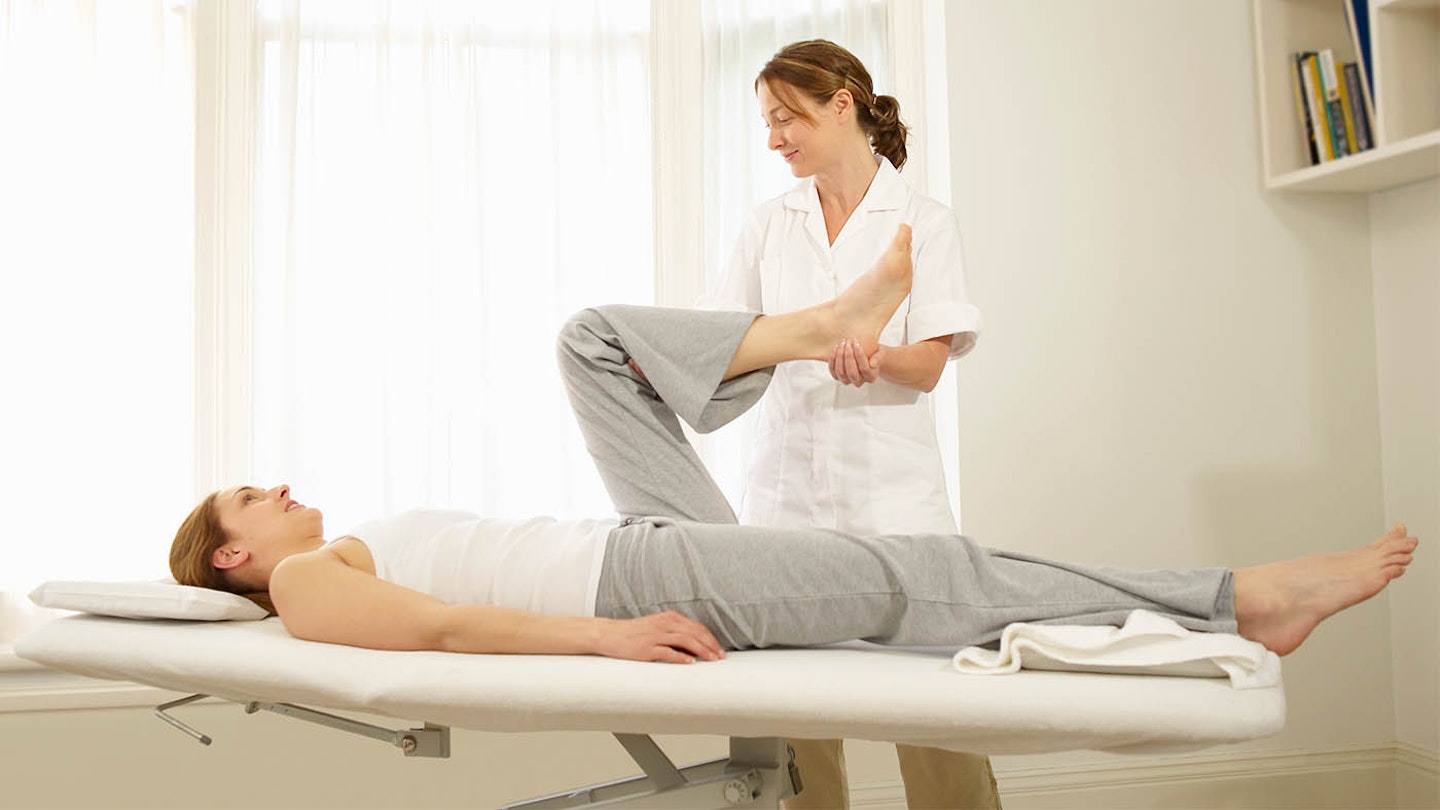You don't need us to tell you that having a baby is no easy feat. As amazing as it can be, the physical effect on your body can be tough and recovery can be a struggle, with many women experiencing difficulties with their pelvic floor, abdominal muscles, tummy gap, back and much more. Something that can help is what's known as a Mummy MOT.
What is a Mummy MOT?
Founded by physiotherapist Maria Elliott, a Mummy MOT is a postnatal examination for women following their vaginal and C-section deliveries.
At the appointment, your posture, pelvic floor muscles and stomach muscles are assessed following childbirth. The physiotherapist leading your appointment will then provide personal and relevant exercises and treatment to help aid your recovery and help you achieve any goals.
What happens at a Mummy MOT?
Your assessment will include the following:
• Full postural screen
• Pelvic floor muscle assessment
• Abdominal muscle exam to check for any separation
• Screening for bladder, bowel or sexual dysfunction
As it includes an internal pelvic exam, you will be required to remove the bottom half of your clothing
The appointment tends to last up to an hour but this can vary depending on your situation
Do I need a Mummy MOT?
It's entirely up to you whether or not you book a Mummy MOT and it is not something available on the NHS so will need to be paid for by yourself. You may feel you need further help and guidance following your 6-8 week check or just want to ensure you are doing everything possible to safely avoid potential postnatal complications.
"All mums should have an MOT. Pregnancy takes a lot," says Mummy MOT founder Maria. "The body is lengthened and stretched and then you deliver your baby with a person you’ve never met. Pushing weakens the pelvic floor so it’s important to do postnatal rehab exercises."
When should I have a Mummy MOT?
Women typically have an initial 'Mummy MOT' assessment after their 6-8 week GP check but women who have carried or given birth several years ago and continue to experience problems are more than welcome to book one.
Real mum experience
Penny Stretton visited a physiotherapist for a postnatal Mummy MOT.
Nearly a year after having my second baby, I still wasn’t feeling like my old self. I had lower back pain, achy knees and my pelvis felt a little on the wobbly side.
‘You need a Mummy MOT,’ a friend told me. I thought she was joking, but she explained that she’d just been for a postnatal health check with a physiotherapist.
I made an appointment with Sinead McCarthy at Six Physio, who specialises in postnatal checks, for the full service to assess my tummy muscles, posture and pelvic floor.
Sinead asked me all sorts of questions about the delivery of my 9lb 8oz baby, and listened carefully to my answers.
She then assessed my painful left knee, watching as I squatted, lifting each foot off the ground in turn. As I wobbled, she said the pain could stem from a weakness in my bottom, leg and tummy muscles, which meant my knee was not well supported and could be helped by strengthening exercises.
Next came a pelvic floor check – and I wasn’t expecting this to be internal. It was a little awkward at first but Sinead was very reassuring.
She talked me through how to properly work my pelvic floor, making sure to begin the squeeze from my back passage, then pulling everything up and in towards the front.
As I practised, she could feel how well the muscle performed. She concluded that my pelvic floor was still a little weak and advised me to do three sets of 10 pelvic floor exercises a day, holding the squeeze for six seconds each time.
I was surprised when Sinead wheeled in the sonography equipment next – I hadn’t had a scan since I was pregnant!
She used it in exactly the same way, putting lotion on my tummy and placing the doppler on, but this time it was to look at the space between my stomach muscles. These often part in pregnancy and don’t always knit back together.
Sinead revealed that mine had come back together above and below my belly button but there was a small gap under it. She talked me through some targeted sit-ups while she watched on the screen how the deeper layers of muscles performed. Reassuringly, she explained that the gap was causing no problems and that my muscles stayed flat and strong.
At the end of the session, I was given clear advice on how to strengthen my body. Sinead recommended I did pilates exercises alongside my current runs.
I felt much better equipped to look after my pelvic floor, including how to sit on the loo!
I felt confident that I’ve now got a clear strategy and that it will alleviate my aches and pains and I also felt good that I’d made my health a priority – normally my two children always come first. It was great to be reminded that, as a mum, I need to look after my body – from the inside out.
Find your local Mummy MOT
The easiest way to find your local physiotherapist for a Mummy MOT is by popping in your postcode to the Mummy MOT website to find your nearest practitioner.
Popular articles to read next
Your post-birth superfoods: 7 ways to nourish your body after your baby arrives
